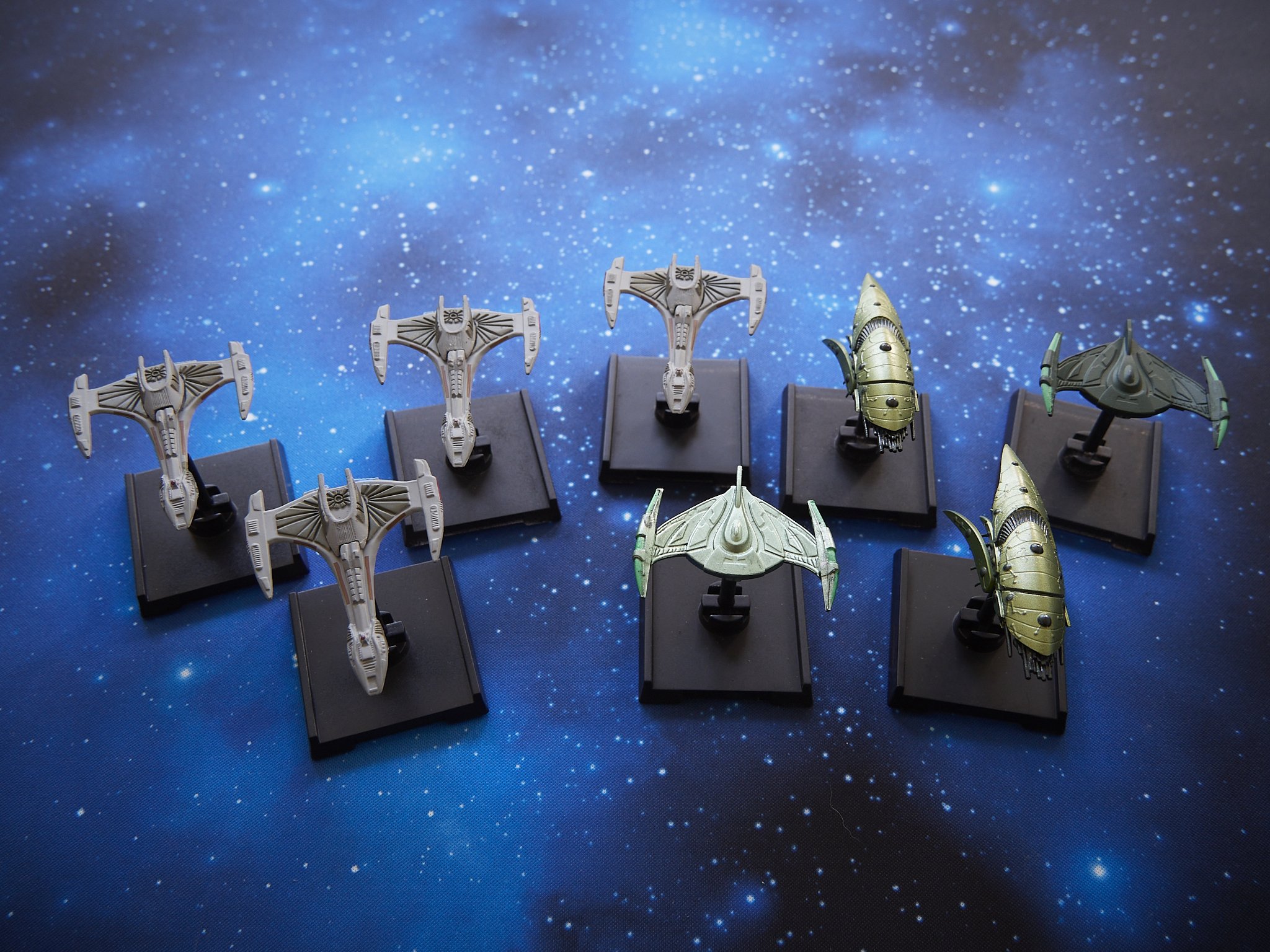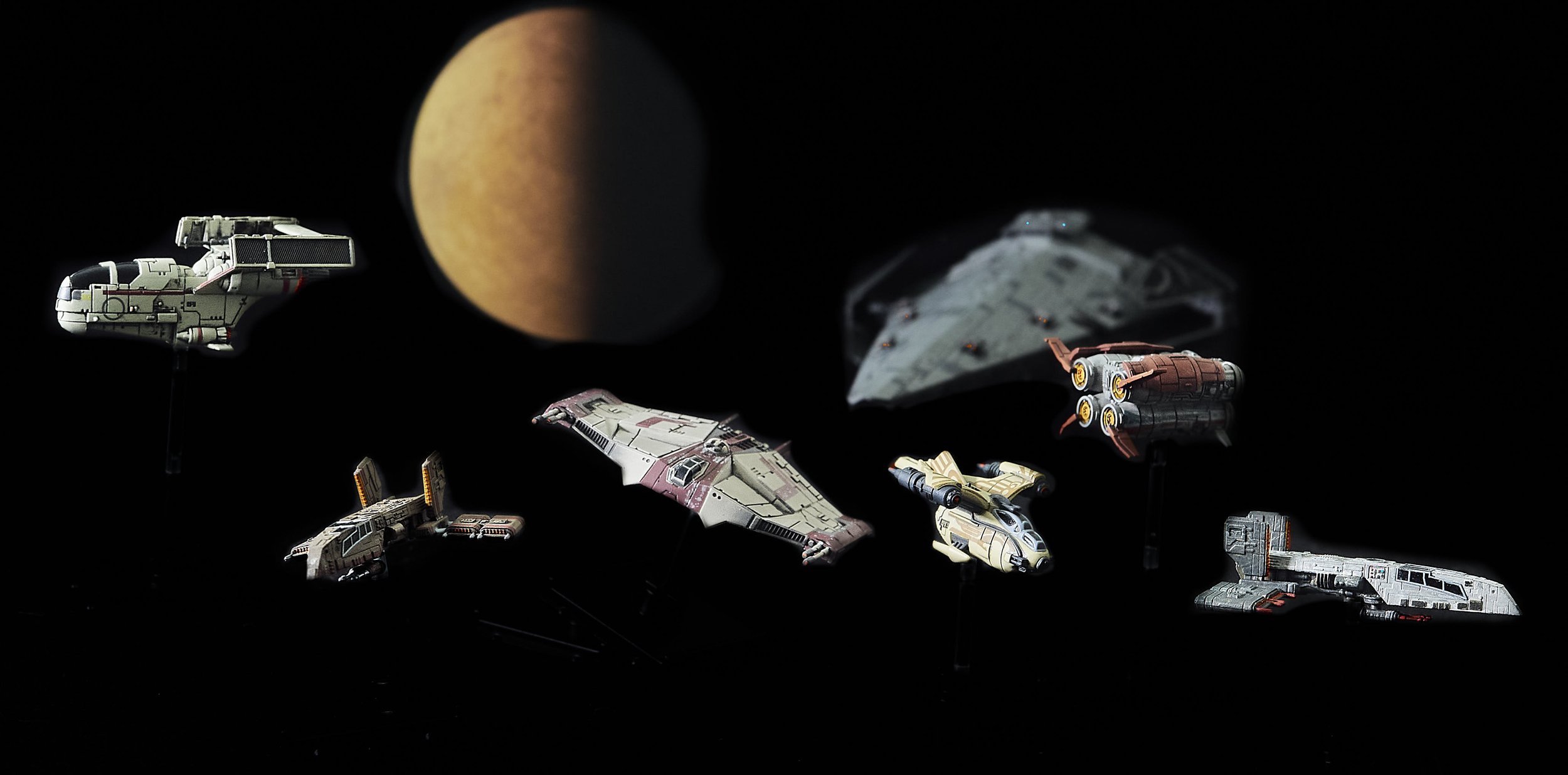Of the many X Wing 1e sub-variants we use, just to keep it alive for us, “Classic” is the clear favourite.
The primary objective of modifying 1e X Wing is to fix the over reach of later X Wing 1e and at the same time to try to capture the elegance of the early game, the rock-paper-scissors dynamic.
Classic does this by only using the elements drawn from the first three movies.
Crew slots are limited, but they make the ships that can take them all the more attractive, as are Droids and rare Systems.
Weapons are heavily reduced in availablilty and choice with several of the strongest ones dropped completely or faction limited.
The base of some of the really strong builds are there, but the known unbeatables are avoided (Palpatine/Soontir, The fully loaded Falcon) by not allowing Titles, Mods or EPT’s, just core ships, Pilots and limited Crew, Ordnance, Illicit, Mech and Systems upgrades.
No effort has been made to limit pilot options for the included ships except for the Scum, who are only allowed the bounty hunters from The Empire Strikes Back, but these can be played also as mercs in the Imperial faction limited to a single ship, or as many as wanted if played as “Krayts Claw”.
The Empire
The Imperials get the usual suspects. The basic Tie, Tie Advanced, Tie Interceptor, Tie Bomber and Lambda. For crew, they are allowed the Emperor, Vader and the Fleet and Systems officers and Rebel Captive (who does nothing vs Scum).
Limited in options, the Imperials are allowed the Heavy Laser Cannon and Homing Missiles as their faction specific weapon edges, with the Cannon, most Systems and all Crew limited to the Lambda, with Advanced Targetting Comp, a Tie Advanced only upgrade at 5 pts. This makes the Lambda a useful addition as a support ship and heavy weapons platform as originally introduced and the Advanced truly Advanced.
The Bomber becomes the ordnance king of the table, again making it a point of tactical interest and variation for the fairly one dimensional Imperials (but with no Unguided Rockets).
As they were early in the game, these allow the Imperials some strong builds and become genuinely attractive in this space.
They have no Turret options, either built in or added.
The Advanced gets the option of Advanced Targetting Comp and Homing Missiles and actually stands out as the true superiority/line fighter of the Imperials.
The Lambda gets Crew, Systems and the Heavy Laser Cannon (which fits the model). A form of the classic Palp mobile, a Vader combo or a simple Gun platform are all possible.
The Bomber is the only specialist Ordnance platform in this game, with Cluster, Concussion, Cruise or Homing Missiles available to it as well as Proton and Plasma Torps. It can also take 2 of the 3 Bombs included, Thermal Detonators and Proximity Mines.
The Interceptor is the Action Bar supremo with no peer.
The Tie Fighter is the only true swarmer in the game, no other ship offerring it’s price to power ratio. Weak as they are 8 Tie Fighters are a force in this game.
This fits well with the initial roll-out of the Imperials. The Lambda and Bomber add the wild card and support options, the rest are just different interpretations of the interceptor-pursuit fighter.
The Rebels
As you would assume, the Rebels get the A, B, Y and X wings, all multi role specialists and the named (no Title) Millenium Falcon. The Bomb Loadout option has not been included as that would open up the whole Rogue One thing, nor are Ion Weapons for simplicity.
Crew and Droid synergies are a strong area and they have the Y, X, B Wing and Falcon to house them. Team work is key with the Pilot/Droid/Crew or Pilot/System/Crew combinations.
The Rebels lack access to Bombs, but they get exclusive access to the Proton Rocket, Advanced Proton Torps and two Turret options (Synched and Auto-blaster).
The B Wing is the Rebel platform for Systems, Crew and Cannon combinations. The B Wing is unique here as it can be the cheap thug, fielding 4, the support ship enabling Crew and the gunship/brawler.
The Falcon is a crew support monster with a rare Turret primary and is the toughest ship in the game. Options are many with 2 crew slots making the Falcon a many striped beast. The thug, supporter, blocker, a mic=x of all of these, it is hard not to include it, but if used, it tends to limit the Rebels to 3 ships maximum.
The Y Wing is the Turret and Torpedo king, balancing out it’s poor movement (although R2’s help). Droids do not include FAA or Targetting, just the core types and the bulk of period correct named ones. Fully loading these limits the Rebels to three in a squad, but to be honest, their best use is in a mixed squad.
The A Wing is the Proton Rocket and speed master and Action king. A force thanks to exclusive access to Proton Rockets and good Pilot abilities. The A Wing is the only Rebel that can be fielded in a pack of 6 (2 with Proton Rockets) or used as a filler ship.
The humble X Wing is stronger in this game, offering the option of Rebel-limited Advanced Proton Torps on a semi-manoeuvrable ship, it sits in a comfortable points range to always be the third ship of any squad. These can be some of the the hardest hitting ships and take plenty of punishment as well, but rely on Pilot/Droid combos for any edges they have. Adding the S-Foil option as a built in feature is an option here also.
So, the Rebels have the three core fighters (fast-fast/tough-versatile/tough-work horse) with a new tech superiority option and the Falcon as king of the table.
The Scum
The Scum in this game are actually the scum Pilots, ships and Crew of the movies. The ships are all the Titled ones (without Title upgrades) and crew are limited to direct connections to these and generics. Illicit upgrades are exclusive as you would expect, each ship getting one option.
The Scum have exclusive access to the nasty and cheap Flechette Torp and Mangler Cannon, which just seem to fit, being “lesser” weapons, but still lethal.
Crew choices can be limiting as the Pilots and Crew are often the same and limited to the actual characters, and Pilots are limited to one per ship except for the Mist Hunter, so taking interesting combinations often limits other ship combinations.
The Mist Hunter gets System, Crew, Illicit and an Evade with two pilot options. This has the potential to be the sneaky one of the pack, being the natural home of the Cloaking Device and probably the Collision Detector or Advanced Sensors. Two pilots also gives it a range of roles.
The Hound’s Tooth “party bus” is as advertised, with Bossk the sole Pilot option. All of the known faces can make this a surprise packet and like the Falcon, it plays a few roles. This is a tough and toothy ship with the highest Shields, a wide angle primary and another Cannon option (as well as a potentially a re-usable Illicit slot i.e. Hot-Shot Blaster or Cargo Drop), which may help it keep it’s enemies to the front.
Punishing One (as originally printed) is a beast. The only other turreted Primary other than the Falcon, it is also the only one that can take a Salvaged Droid (which are kept to 4 Generics) and Crew. With its odd manoeuvre dial and S-Loop, it actually has the most mamoeuvre choices in the game.
IG-2000 and IG88A is the slowest ship in the game, but has the best action bar and Evade in the Scum faction the most green manoeuvres in the game and the rare and Scum limited S-Loop making it the Scum manoeuvre monster. It also has dual Cannons and Systems which can lead to some devastating combinations. The close Brawler of the game.
Slave-1, with only Boba Fett, is versatile, brutal and tough, with the destincion of being the second dearest Scum ship in this game. Without Title still makes the Slave-1 a decent ordnance platform and like the other Scum ships, it is tricky and unpredictable.
The Scum generally build either a 2 ship “maxed out” squad or a 3 ship “Bare Bones” one. Either are tough, but 100 Pts, with only a single version of each ship tends to push them, so often 120pt sqauds are used (The Mist Hunter is the only ship that generally comes in under 35 pts). The Empire may take a single Merc in their squad, which really mixes things up, especially when they are pitted against a Scum squad.
Other Upgrades
No generic crew are available, just the faction specific ones, mostly named characters with a few thematically faction specifics like Gonk, System Officer etc (or who would Vader scare the S*#t out of?), which is not a real issue as the slots are limited.
I have 2 Lambda’s , but even then, there is always a left-over crew option and the Rebels can field a maximum of 4 in a squad so their relatively huge cast are always varied (especially with a few being shared Droid/Pilot options).
The Scum have a few Crew specific characters, but otherwise most share Pilot and Crew roles, but again, they rarely field more than 2-3 ships a game even if the Empire take their option of a single Merc in their squad.
Cluster, Concussion and Cruise missiles are generic as available as are Plasma Torps, Auto-Blaster Cannons, Proximity mines and Thermal Detonators.
The Empire get the toothy Heavy Laser Cannon for the Lambda and Homing Missiles for the Advanced.
The Rebels get Advanced Proton Torps, Proton Rockets.
The Scum get Flechette Torps, Seismic Charges and Mangler Cannons as “cheap and nasty” options. We had Ion weapons in the Rebel arsenal, but they added complication and too much advantage, but may be slotted back in.
All Turrets are limited to the Y Wing and the Rebels get no Bombs.
It still amazes me, that even with over three quarters of the game stripped away and severe limitations imposed, there are near infinite options available. What has happenned of course is “lesser” upgrades, rarely used ships, Pilos and squad builds have been re-enabled, proving again that X Wing is a layered game, that does not change at it’s core when a different layer is used.
We have seen for a while now that the game has many faces, the “full noise”, all options applied one is only one and the one most likely to loose sight of the games’ elegance and strong roots.





































